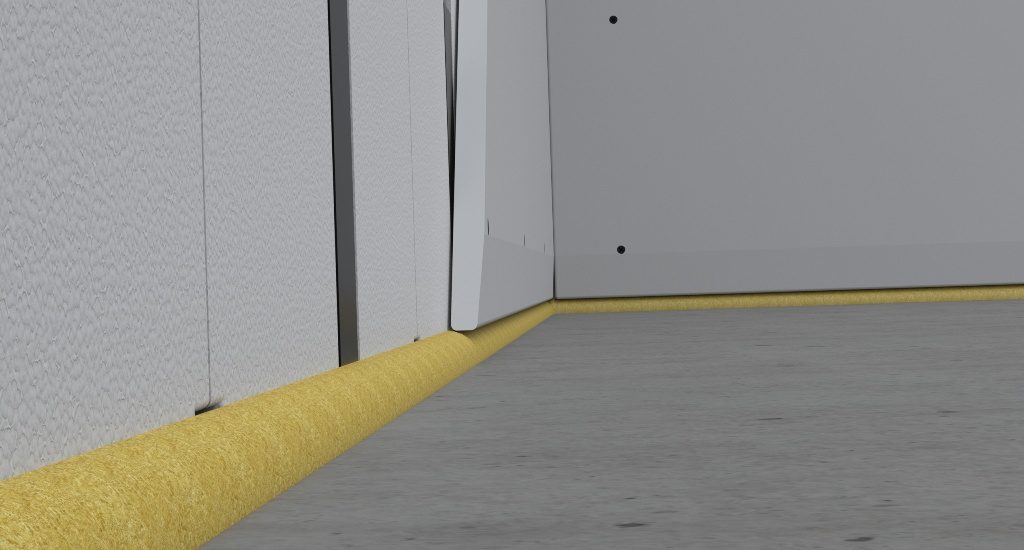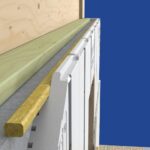

Air Sealing at the bottom edge of the drywall
Insulating your basement a worthwhile investment!
Adding insulation to your basement is one of the most cost effective investments you can make for your home. It can and will expand your living space, increase your comfort and the value to your home. In order to make the renovation worthwhile, there are a few important things to consider before you start. Avoiding costly mistakes with your investment by addressing all mold and moisture issues.
Water- Gas – and Mold. Oh My!
Basements are often dark, moist, spider ridden dungeons- the perfect place for scary story telling. Basement stories are like, “The Wizard of Oz”- there are a lot of scary and strange things in a dark place. If you stay the course and do the right things there is a wonderful world of extra space and a beautiful playland for your kids.
Dust and pollen can be a challenge.
All surfaces contain the presence of dirt, dust and pollen, mold is able to thrive on almost any surface given just the right conditions, when moisture is present. Mold needs water, food, oxygen, and an environment between 40-100 degrees F to thrive. Basements often provide the perfect home for mold.
Mold needs food.

(Note that in the above picture the bread is moldy not the plastic bag.)
Mold is an opportunist and will decomposes organic material, as soon as there is enough H2O. Therefor mold grows very easily on organic material such as bread, wood and the paper on drywall. The mold spores will start growing within 24-48 hours after a water leak, so it’s important to act fast when dealing with a water problem in your basement and to build with materials that provide zero nutritional value in which the mold spores to survive. Additionally, make sure you seal the wall with spray foam to seal the air leaks. Cut off the air, moisture and food supply.
Do the air channels dry the concrete wall?
No! The channels in the back of our panels are not meant to air dry the concrete wall. Unfortunately you don’t choose the air that would move through a wall system. The air can transport dust, pollen, viruses, and with it dust mites.

It’s not good building practice to use vapor barriers with wood framing below grade moisture problems are inevitable. When the wall happens to get wet for any reason, the vapor barrier prevents inhibits the materials that got wet from drying. InSoFast is a Class III vapor barrier that does not retain water(it’s plastic) yet it will allow drying to the inside so vapor/moisture, pressure will not build up. With that said we still want you to air seal the InSoFast panel at all penetrations, at the floor and top of the wall. The drainage channels are not air drying channels, they are gravity powered drainage channels. To recap, you want to limit dust filled moisture ladened air from coming into contact with the cool concrete. The channels on the back of our panels are gravity drains and NOT air channels.
Guarantees with concrete.
Consider the old joke about concrete. The only guarantee with concrete is that it will crack. Cracks and tiny fissures open ourselves up to water and other potential hazards like soil gas. This particular detail was developed by one of our partners years ago to address these types of leaks.
Soil gas See: 90960: InSoFast Active Radon or Moisture Control System.PDF
Thus it is critical to call out for sealing off the top, bottom, and any other penetrations, with spray foam. The drainage channels are not air channels. They are gravity powered drainage channels. So it is best to seal off the wall from the holes and gaps to complete your thermal envelope for a better healthier project.
The first step in tackling your basement renovation project involves simple ingredients-Mold Stain and Mildew Stain Remover and elbow grease! Start by using a bucket of remover and water thoroughly scrub mold, dirt and debris off the walls. Make sure you rinse and let the walls dry completely. Before blocking the walls with insulation you also need to correct any water intrusion problems that already exist. The best defense is still good design and keeping the water away from the house.4.a
At InSoFast, we are trying to help you to build better, healthier, safer, insulated basement!
It’s important to think ahead in order to invest responsibly in your basement renovation. Following these tips will help result in a pleasant mold-free basement.
Sources:
1. Department of Energy, Basement Insulation 102002-0776
2. Understanding Basement Insulation
4. EPA Moisture Control guidance for building design and maintenance






